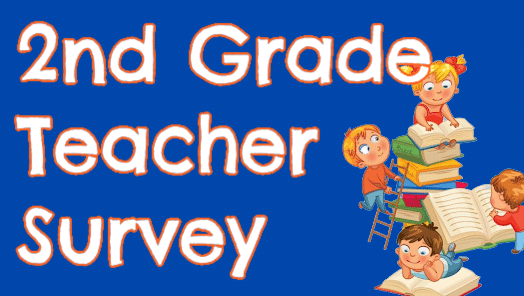Teacher Survey: 2nd Grade Reading Level
Here are the key findings from our survey of more than 500 second grade teachers.
Key Finding #1: 54% of second graders are reading below the second grade reading level
To be clear, this is not a quantitative, government-derived measure of students’ reading levels, but rather the opinion of second grade teachers based on their first hand experience. Thus, although not a formal measure, the anecdotal opinions of second grade teachers should be granted deference as they possess years of experience. In short, according to this group of second grade teachers, a majority of American second graders are struggling to read at the requisite level.
Key Finding #2: Only 22% of parents are doing enough to help their children with reading
Obviously, the phrase “doing enough” is a subjective measure based on individual teacher perceptions. Moreover, teachers have limited insight into the depth of parental support outside of the classroom. However, trusting the intuition of second grade teachers, the results are somewhat concerning. Less than a quarter of second grade parents are satisfactorily involved in working with their children to develop their reading skills. For reference, our survey did not explore the underlying reasons for such shortcomings (such as parents being too busy or relying too much on their child’s school).
Key Finding #3: 66% of teachers believe setting aside time each day to read with children is the best means of improving their reading abilities
As part of our survey, we asked teachers what they believed was the most effective method for parents to work with their children to improve their reading skills. We presented the teachers with a list of five options covering a diverse set of reading skill development strategies. The vast majority of surveyed teachers selected setting aside time each day to read with a child as the most effective means of improving their skills. The collective opinion appears to be that the concept of time spent together reading is more effective than all other possible options.
What Does 2nd Grade Reading Comprehension Look Like?
Frustratingly, there is no clear cut definition of the second grade reading level by which parents can assess their child’s skills. It is more so a matter of ensuring your child is hitting certain milestones and making progress with basic skills. Let’s consider some examples below:
- Decoding Skills: By the second grade, children should be able to sound out (i.e., decode) words with more complex sounds and phonetic patterns. This includes identifying and utilizing consonant blends, vowel combinations, and digrams. In short, second graders should have a firmer grasp of phonics and the skill of decoding words.
- Fluency: Second graders should be able to read with greater fluency, meaning they can read smoothly with fewer pauses, hesitations, and stutters. They should understand basic punctuation, as well as phrasing in passages.
- Vocabulary: Second grade typically coincides with an explosion of vocabulary. Children should be understanding new words at an increasing rate. Identifying sight words (i.e., words that appear frequently and which students do not need to decode) should come much more easily. There should be a focus on building a broader vocabulary through exposure to new words.
- Comprehension: Reading comprehension skills start to become important in the second grade. Students should be able to understand and discuss the main ideas and details of a text passage. This involves making inferences and predictions, as well as being able to summarize key points. In other words, second graders should be able to comprehend most basic texts and make connections between what is read and personal experience.
- Reading Independence: Second graders should be encouraged to read independently and choose what they read. This helps to develop passion for reading and broadens their interests.
- Writing Connection: Near the end of second grade, children should be making stronger connections between reading and writing. They should start using what they are learning from reading in their own writing.
Bear in mind that children develop at different rates, with variability across different skills. Do not worry if you feel that your child is falling behind. Individual progress can differ greatly from child to child at this age. Teachers and school districts will use a variety of assessments (such as Lexile levels) to gauge individual progress and tailor instruction accordingly.
2nd Grade Reading Worksheets, Books, Passages, & Activities
The best place to find all second grade level reading resources (including worksheets, books, passages, games and activities) is your child’s school. Understandably, this is not what many parents want to hear. Yes, there are thousands of widely available tools that can be purchased on Amazon; however, there is no better resource than your child’s teacher and school librarian.
Assuming your son or daughter’s teacher is experienced and has been afforded an adequate opportunity to work with and assess your second grader’s reading level, they will be better positioned than anyone else to make recommendations and suggest resources. Moreover, school librarians are specifically educated to provide customized resources for a child based on consultation with their teacher and parents.
Moreover, not only are such resources specifically tailored for your student’s needs, but such resources are also 100% free. It is our team’s suggestion that you start with your school librarian and/or teacher before spending money on third party worksheets, books, and passages.
Methodology
All data found within this report derives from a survey commissioned by TestPrepInsight.com. In total, 522 second grade teachers were surveyed across 37 states (working at both public and private schools).
All respondents were asked to answer questions truthfully and to the best of their abilities, with assurances that their identity would remain confidential. Any questions can be directed to info@testprepinsight.com.

